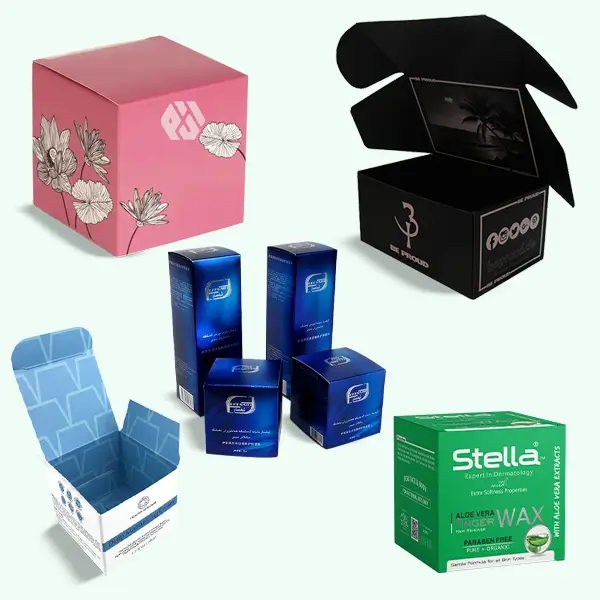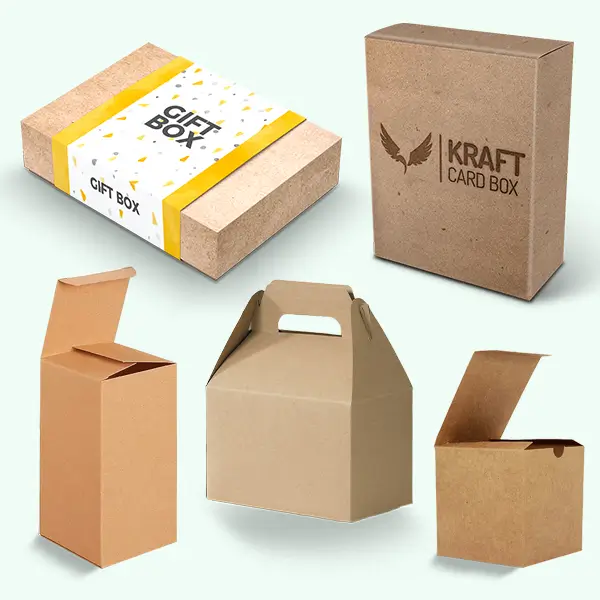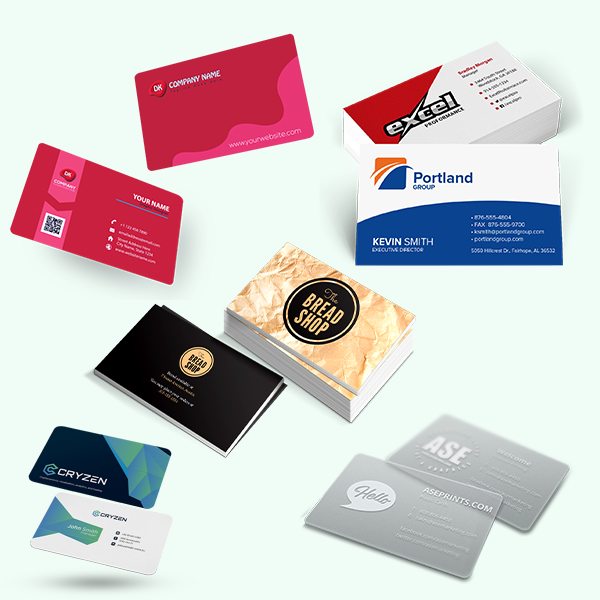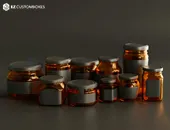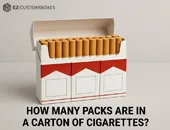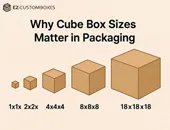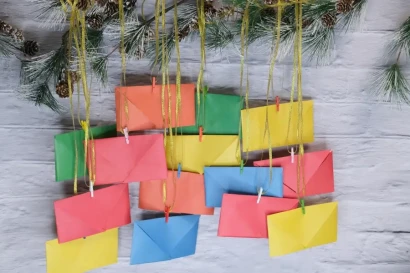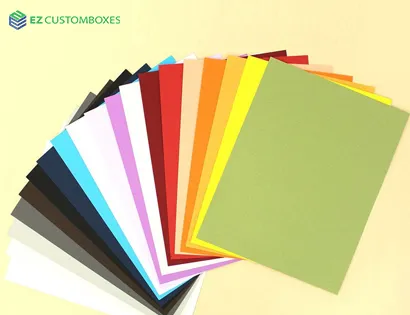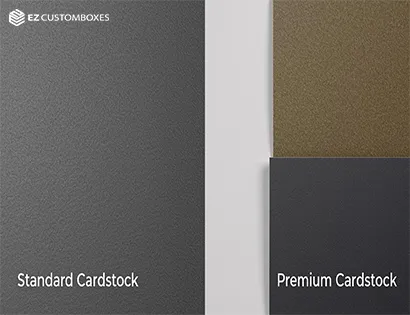Introduction: What Is Cardboard Made Of?
If you have ever moved house, ordered a package, or bought cereal, you have already used cardboard. But what is cardboard made of exactly?
In simple terms, most cardboard is made from:
- Wood pulp (from trees)
- Recycled paper and cardboard
- Water and starch-based glue
- Small amounts of additives for strength and print quality
In this guide, we will break down:
- What cardboard is made of and how it is manufactured
- The different types of cardboard and what they’re used for
- Is cardboard recyclable? and how to recycle it
- Where can I buy cardboard boxes and where to get cardboard boxes cheaply
- Where to recycle cardboard near me and how to reuse boxes at home
By the end, you will know exactly how cardboard is made, how to choose the right kind, and how to use it in an eco-friendly way.
What Is Cardboard Made Of?
Q: What is cardboard made of?
A: Most cardboard is made from a mix of wood pulp and recycled paper, combined with water, pressed into sheets, and glued together with starch-based adhesives. Corrugated cardboard (the kind used for shipping boxes) has:
- Outer layers: strong paper called linerboard
- Middle layer: a fluted (wavy) sheet made from recycled paper
- Glue: usually starch-based, often from corn or wheat
This structure makes cardboard strong, lightweight, and recyclable.
Understanding Cardboard:
Before we go deeper, it helps to understand that “cardboard” is a general word, not a precise technical term. In packaging, professionals usually talk about:
- Paperboard (thin, single-layer board like cereal boxes)
- Corrugated fiberboard (wavy middle layer + outer liners, like shipping boxes)
When people search “what is cardboard made of,” they usually mean the material used for boxes and packaging. That is mainly corrugated fiberboard and paperboard.
Main Materials Used to Make Cardboard
Cardboard is mostly made from three core ingredients:
1. Wood Pulp
- Comes from softwood and hardwood trees
- Softwood fibers (like pine) are long and strong, good for strength
- Hardwood fibers (like birch) are shorter, good for smooth surfaces
The pulp can be:
- Virgin pulp: made directly from trees
- Recycled pulp: made from used paper and cardboard
Most cardboard today uses a mix of virgin and recycled pulp to balance strength, cost, and sustainability.
2. Recycled Paper & Cardboard
Recycled material comes from:
- Old cardboard boxes
- Office paper and newspapers
- Packaging waste from stores and warehouses
Benefits of using recycled content:
- Reduces demand for new trees
- Saves energy and water compared to virgin pulp
- Keeps cardboard out of landfills
Many shipping boxes are now 70–100% recycled content, depending on local regulations and manufacturer standards.
3. Water and Starch-Based Adhesives
To turn fibers into cardboard, manufacturers use:
- Water: to turn fibers into a wet pulp and to shape them into sheets
- Starch-based glue: often made from corn, wheat, or potato starch
- Sometimes minor additives, such as:
- Sizing agents (help control water absorption)
- Coatings (improve print quality or moisture resistance)
These materials are chosen because they are:
- Relatively eco-friendly
- Biodegradable
- Compatible with recycling systems
How Is Cardboard Made? Step-by-Step
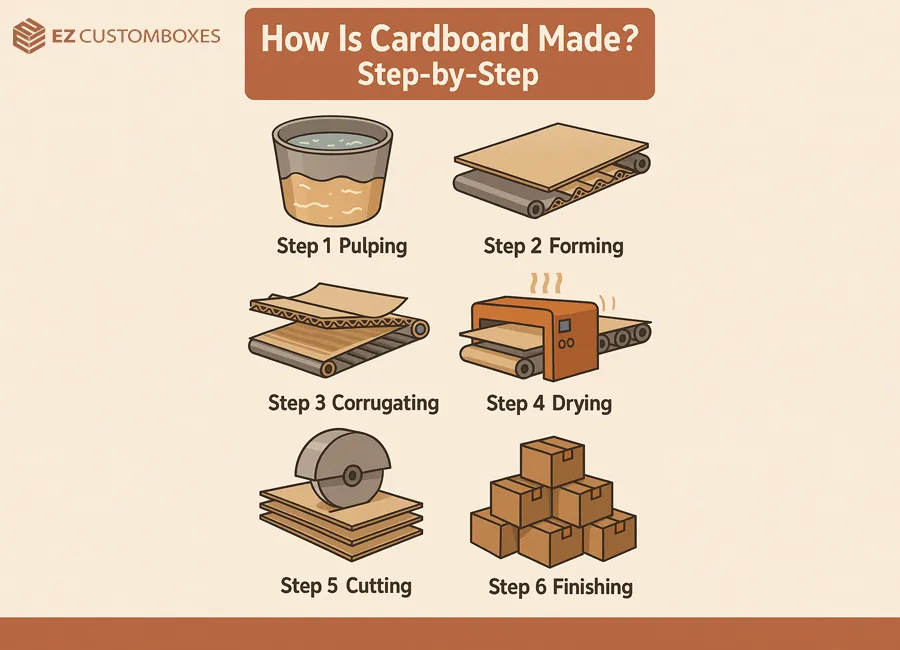
Understanding the process helps answer what cardboard is made of in a practical way.
1. Pulping
- Raw materials collected
- Wood chips
- Recycled paper and cardboard
- Pulping process
- Materials are mixed with water
- Mechanical or chemical processes break fibers apart
- Ink and contaminants are removed during cleaning steps
- Pulp preparation
- Fibers are refined so they bond well
- The mix is adjusted (virgin vs recycled) to reach the desired strength
2. Sheet Formation
- The wet pulp is spread onto a moving wire mesh on a paper machine.
- Water drains away through gravity and vacuum.
- The wet sheet moves through press rollers to squeeze out more water.
- It then passes through heated drying cylinders to remove remaining moisture.
The result is a continuous roll of paper, which can become:
- Linerboard (outer layers of corrugated board)
- Paperboard (for cartons and boxes)
3. Making Corrugated Cardboard
For shipping boxes, corrugated fiberboard is created:
- A fluting machine shapes a paper sheet into waves (flutes).
- This fluted sheet is glued between two flat linerboards using starch glue.
- Additional linerboard layers can be added for extra strength (double-wall or triple-wall).
- The board is cut and scored into blank shapes.
- These blanks are folded and glued to form cardboard boxes.
Types of Cardboard and What They’re Made For
1. Corrugated Fiberboard (Shipping Boxes)
- Structure: Fluted middle layer + 1 or 2 outer liners
- Material: Usually a high percentage of recycled fibers
- Use:
- Moving boxes
- Shipping boxes
- E-commerce packaging
- Heavy or fragile items
Common flute types:
- E-flute: thin, good for smaller packaging with nice print
- B-flute / C-flute: standard shipping boxes
- Double wall: combines flutes for more strength
2. Paperboard / Carton Board (Retail Packaging)
- Single, thicker sheet of paper-based board
- Smooth and great for printing and branding
- Uses:
- Cereal boxes
- Cosmetic packaging
- Pharma boxes
- Consumer goods cartons
3. Card Stock
- Thicker than regular paper, thinner than cardboard
- Stiff enough to stand, flexible enough to cut easily
- Uses:
- Greeting cards
- Postcards
- Crafting
- Business cards (heavier stocks)
What Makes Cardboard Strong?
Cardboard strength depends on:
- Fiber quality
- Longer fibers = stronger
- More virgin fiber = usually higher strength
- Layer structure
- Corrugated board uses flutes to create cushioning and rigidity
- Double-wall boards are stronger than single-wall
- Moisture content
- Wet cardboard loses strength
- That is why boxes stored in damp areas sag or collapse
- Box design
- Well-designed folds and seams improve load-bearing ability
- Right box size reduces crushing risk during stacking and shipping
Is Cardboard Recyclable?
Q: Is cardboard recyclable?
A: Yes. Cardboard is one of the most recyclable materials in the world. Most communities accept:
- Corrugated shipping boxes
- Paperboard cartons
- Clean, dry cardboard packaging
To recycle cardboard properly:
- Remove plastic tape, labels, and non-paper inserts where possible
- Flatten the boxes
- Keep them clean and dry (no food-soaked pizza boxes, for example)
Wet or heavily contaminated cardboard can contaminate a recycling batch, so it might be rejected.
Where to Recycle Cardboard Near Me
Many readers also ask, “where to recycle cardboard near me?” Here are common options:
1. Curbside Recycling
Most cities and towns offer:
- Curbside recycling bins for cardboard
- Scheduled collection days
Tips:
- Check your local waste management website for accepted materials
- Flatten all boxes so they take less space
- Avoid stacking wet cardboard in the bin
2. Recycling Drop-Off Centers
If curbside isn’t available or you have a lot of boxes:
- Look for municipal recycling centers
- Hardware stores or community centers may host recycling stations
- Some centers offer separate bins for cardboard and paper
3. Retail & Store Recycling Programs
Some big retailers and warehouse chains:
- Accept cardboard for recycling
- Allow customers to drop off flattened boxes
- Sometimes provide donation points for reusable boxes
Search online for “where to recycle cardboard near me” plus your city name to find specific locations and guidelines.
Where Can I Buy Cardboard Boxes?
Many people search related queries like:
- where can I buy cardboard boxes
- where to get cardboard boxes
- where can I get cardboard boxes
Here are common sources.
1. Home Improvement Stores
You can often buy boxes at:
- Large hardware chains
- Local building supply stores
They usually stock:
- Standard moving boxes (small, medium, large)
- Specialty boxes (wardrobe, TV boxes, dish packs)
- Packing materials (tape, bubble wrap, paper)
2. Office Supply Stores
Office supply stores typically sell:
- Shipping boxes in multiple sizes
- File storage boxes
- Mailers and packing tape
These stores are useful when you need small quantities quickly.
3. Grocery Stores & Big Box Retailers
Large supermarkets and department stores may offer:
- New moving boxes for sale
- Occasional promotions during moving seasons
Some stores also allow you to:
- Ask for their used cardboard boxes (for free), especially from produce or dry goods sections. Always ask staff first.
4. Online Retailers
If you want to order from home:
- E-commerce platforms sell boxes in packs
- You can choose size, thickness, and quantity
- Bulk buying is often cheaper per box
5. Local Packaging Supply Shops
Look for local packaging suppliers if you need:
- Custom sizes
- Thick, heavy-duty boxes
- Printed or branded cardboard boxes
Where to Get Cardboard Boxes
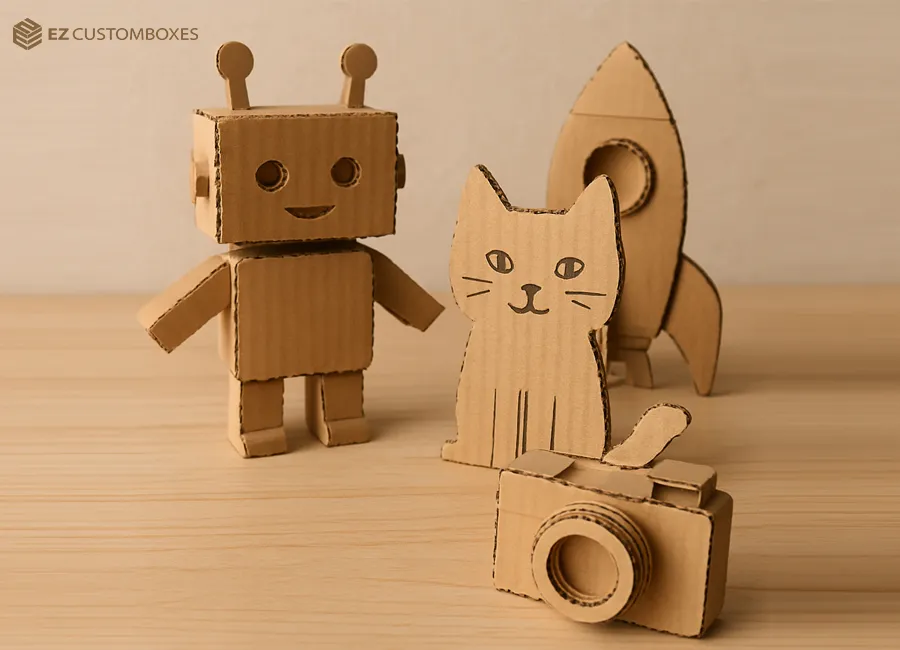
If cost is your main concern and you think, “I just need some boxes,” try:
- Supermarkets and grocery stores
- Ask for clean boxes from the stockroom
- Liquor stores
- Bottle boxes are sturdy and great for heavy items
- Bookstores
- Book boxes are strong and compact
- Office buildings
- Many offices recycle packaging boxes regularly
Always:
- Choose clean, dry boxes
- Avoid boxes with large tears, crushed corners, or water damage
Eco-Friendly Side: Why Cardboard Is Considered Sustainable
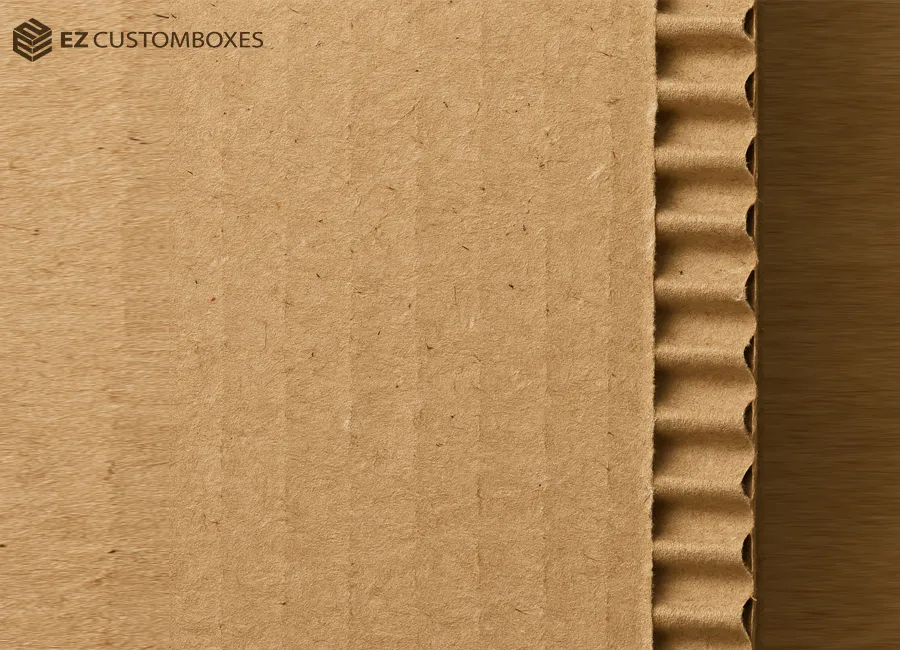
When people ask what is cardboard made of, they also often care about the environmental impact.
1. Renewable and Recyclable
- Made mainly from wood fibers, a renewable resource
- Widely recycled and often made with high recycled content
2. Lower Carbon Footprint (Compared to Many Plastics)
- Cardboard breaks down more easily in nature
- Less long-term pollution compared to plastic packaging
- Many manufacturers invest in responsible forestry and efficient production
3. Reuse Before Recycling
Before you recycle, you can:
- Reuse boxes for moving or storage
- Use them in DIY projects and crafts
- Use cardboard sheets for gardening (weed barrier, compost brown material)
Practical Uses of Cardboard in Daily Life
Cardboard is not just for boxes. It is used for:
- Shipping and packaging
- E-commerce parcels
- Postal boxes
- Retail packaging
- Cereal boxes
- Cosmetics
- Food items
- Crafts and education
- School projects
- Models and prototypes
- Home organization
- Storage boxes
- Drawer dividers
Because we know what cardboard is made of (paper fibers, glue, and coatings), we can use it smarter and recycle it properly.
How to Choose the Right Cardboard Box
When you are buying boxes, keep in mind:
1. Size
- Choose a box just slightly larger than your items
- Avoid boxes that are too big, so items don’t move around
- Use small boxes for heavy items like books
2. Strength
- Look for double-wall boxes for heavy or fragile items
- Check for any printed strength rating (like ECT or edge crush test, if visible)
- If reusing boxes, skip any that are soft, crushed, or damp
3. Purpose
Choose based on what you are doing:
- Moving house: mixed pack of small, medium, large, plus wardrobe boxes
- Shipping products: standard corrugated shipping cartons
- Storage: sturdy boxes with lids that are easy to label
Frequently Asked Questions (FAQs)
1. What is cardboard made of in simple terms?
Cardboard is mostly made from wood pulp and recycled paper, mixed with water and pressed into sheets. For boxes, these sheets are glued together with starch-based glue around a wavy inner layer called fluting. This creates strong but lightweight packaging.
2. Is cardboard recyclable?
Yes, cardboard is recyclable. Most curbside programs accept clean, dry cardboard. Just flatten your boxes, remove non-paper materials like plastic tape where possible, and place them in your recycling bin. Food-soiled cardboard (like greasy pizza boxes) may not be accepted.
3. Where can I buy cardboard boxes for moving or shipping?
You can buy cardboard boxes at home improvement stores, office supply shops, big box retailers, online marketplaces, and local packaging suppliers. If you search “where can I buy cardboard boxes” with your city name, you will see nearby options and online delivery choices.
4. Where to get cardboard boxes for free?
To get free cardboard boxes, ask at:
- Supermarkets and grocery stores
- Liquor stores
- Bookstores
- Local offices
They often have extra boxes from deliveries. Make sure the boxes are strong, clean, and dry before reusing them.
5. Where can I get cardboard boxes on short notice?
If you need boxes quickly, check:
- Local hardware or home improvement stores
- Office supply stores
- Large retail chains
Many of these stores sell moving and shipping boxes in-store, so you can pick them up the same day.
6. Where to recycle cardboard near me?
To find where to recycle cardboard near me, check:
- Your city or town’s waste management website
- Local recycling drop-off centers
- Retailers that offer cardboard recycling programs
Most communities accept cardboard through either curbside recycling or public recycling centers.
7. Can wet or dirty cardboard be recycled?
Wet or heavily soiled cardboard is often not accepted in recycling programs because it weakens the fibers and can contaminate other materials. If only a small part is dirty, you can cut that part off and recycle the clean rest. Very dirty or greasy cardboard usually belongs in the trash or compost (if allowed).
8. Is cardboard biodegradable?
Yes, cardboard is generally biodegradable. It breaks down over time in natural conditions because it is made from wood fibers and starch-based glue. However, it is still better to reuse or recycle cardboard whenever possible to reduce waste.
9. Are all cardboard boxes made from recycled material?
Not all boxes are 100% recycled, but many contain a high percentage of recycled fibers. Some packaging (especially food packaging) may use more virgin pulp for strength, safety, or print quality. You may see labels like “Made from recycled material” on some products.
10. Is cardboard better than plastic for the environment?
In most cases, cardboard is seen as more eco-friendly than many types of plastic because it is widely recyclable and biodegradable. However, the best choice always depends on the full life cycle, how many times it is reused, and how it is disposed of. Reusing both cardboard and plastic packaging is always a smarter option than single use.
Conclusion: Use Cardboard Wisely and Responsibly
Now you know what cardboard is made of: mainly wood pulp, recycled paper, water, and starch-based glue, shaped into strong, versatile sheets. You have also seen:
- How cardboard is manufactured and why it is so strong
- The main types of cardboard and what they’re used for
- That cardboard is recyclable, and how to recycle it correctly
- Where can I buy cardboard boxes and where to get cardboard boxes cheaply or for free
- Where to recycle cardboard near me using local recycling services and drop-off points
Cardboard is everywhere in modern life. When you buy, use, reuse, and recycle it thoughtfully, you help reduce waste and support a more sustainable system.
Call-to-Action:
Next time you unpack a delivery or finish a cereal box, pause for a second. Can you reuse that cardboard for storage or crafts? If not, flatten it and put it in the right recycling stream. A small habit like this makes a real difference over time.

Ethan Robert works at EZ Custom Boxes as their digital marketing manager. Having a solid background in SEO, content strategy, and eCommerce growth, he specialises in using creative packaging content and data-driven campaigns to drive online visibility and brand interaction.


